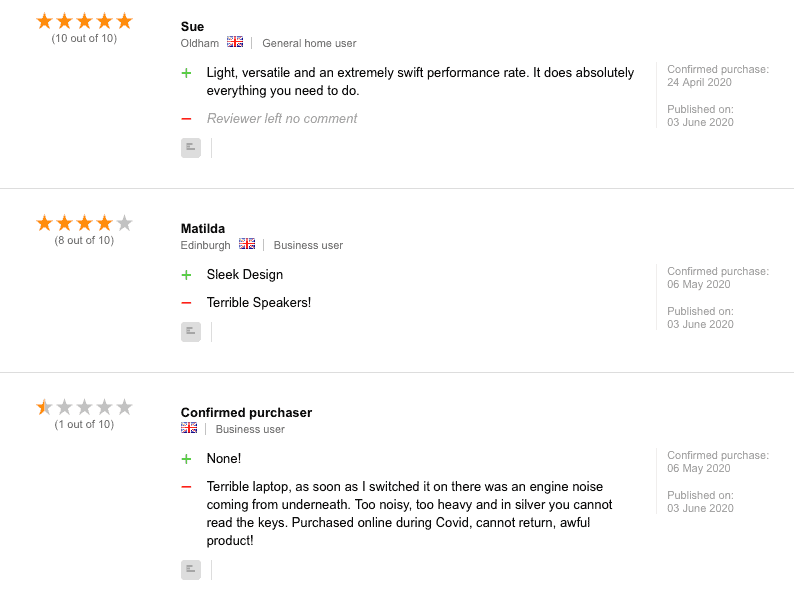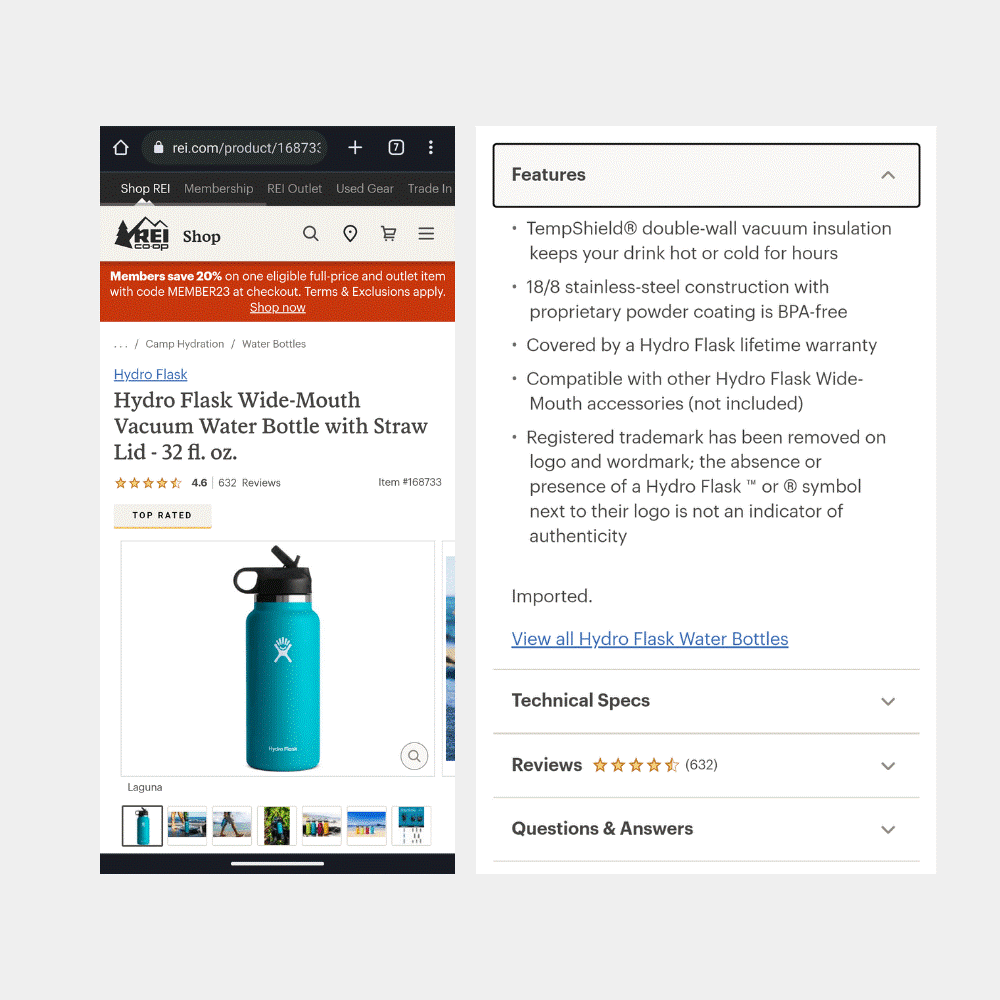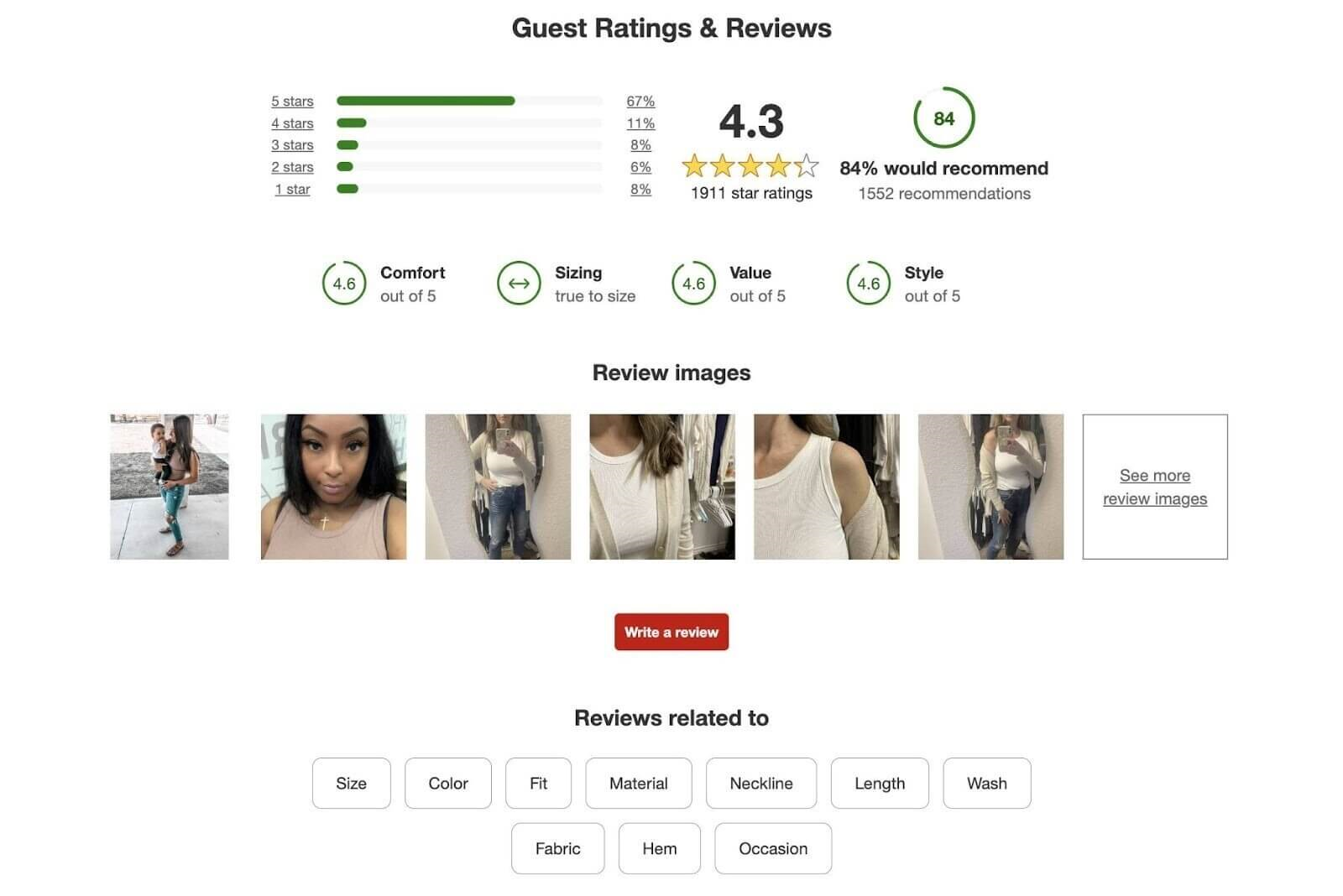
With more and more consumers turning to online platforms for their shopping needs, the eCommerce landscape is booming. In fact, global eCommerce sales are projected to surpass eight trillion dollars by 2027. In this competitive market, understanding what your customers want is no longer a suggestion; it's a necessity. By catering to their preferences and addressing their pain points, you can create a positive shopping experience that drives sales and fosters customer loyalty.

Source: Statista
This article delves into the key factors that influence eCommerce shopper behavior, providing actionable insights to help you optimize your e-store and attract and retain a loyal customer base.
Building Trust and Credibility: The Foundation of Successful eCommerce
Trust is the cornerstone of any successful business relationship, and eCommerce is no exception. Shoppers bombarded with countless online options are naturally cautious about making purchases from unfamiliar websites.
Here's how you can build trust and establish yourself as a reliable seller:
-
Display Prominent Trust Signals
-
Customer Testimonials and Reviews: Positive testimonials and reviews from satisfied customers act as social proof, validating your brand and products. Encourage customers to leave reviews by offering incentives or simply making the process easy and convenient. Display these testimonials and reviews prominently on your website, particularly product pages.

Source: EcommerceGuide
-
Security Seals: Partner with trusted security companies and prominently display their logos on your website. This reassures customers that their financial information is protected during transactions.
Read also: Transform Your eCommerce Strategy with Neuromarketing Insights
-
Transparency Through Detailed Product Information
-
Accurate Descriptions: Provide comprehensive and accurate descriptions of your products. Include details like specifications, dimensions, materials, care instructions, and any relevant warranties.

Source: SEMRush
-
High-Quality Images and Videos: Since shoppers can't physically interact with your products online, high-quality visuals are essential. Use clear, well-lit photos showcasing your products from various angles, including close-ups to highlight details and lifestyle shots demonstrating how the product is used in real-world scenarios. Consider incorporating 360-degree product views or short videos for a more immersive experience.
-
Professional Website Design
-
Clean and User-Friendly Interface: A website that is easy to navigate and visually appealing fosters trust with visitors. Invest in a clean and user-friendly website design that is free from clutter and broken links.
-
Mobile Responsiveness: It's crucial to have a website that is responsive and renders flawlessly across all devices, including smartphones and tablets.
Read also: Transforming Mobile Shopping Experience with AI
Enhancing Product Information: Empowering Informed Decisions
Empowered with the right information, customers can make confident purchase decisions. Here's how to optimize your product information to empower informed buying:
-
Compelling Product Descriptions:
-
Focus on Benefits: Go beyond simply listing features. Craft engaging product descriptions that highlight the benefits of your products and how they can solve customers' problems or improve their lives.
-
SEO Optimization: Integrate relevant keywords throughout your product descriptions to improve search engine ranking and ensure your target audience can easily find your products. However, avoid keyword stuffing that can compromise readability.
-
Customer Reviews and Ratings:
-
Social Proof and Trust: Customer reviews and ratings are powerful tools for building trust and influencing purchase decisions. According to a report, 90% of shoppers read online reviews before making a purchase. Encourage customers to leave reviews by offering incentives or simply making the process easy. Respond to both positive and negative reviews in a professional and timely manner, demonstrating your commitment to customer satisfaction.

Source: SEMRush - Guest Ratings
-
Detailed Specifications:
-
Cater to Specific Needs: Provide detailed product specifications, including size charts, material breakdowns, and technical specifications for electronic products. This empowers customers to make informed decisions based on their specific needs and preferences.
Read also: Your Ultimate Guide to Building Market-Winning Product Listings
Creating a Seamless User Experience: The Key to Conversion
A seamless user experience is critical for keeping shoppers engaged on your store and converting them into paying customers. Here are some key aspects to consider:
-
Mobile-Friendly Shopping
-
Responsive Design: As mentioned earlier, ensure your website is responsive and adapts seamlessly to different screen sizes.
-
Mobile-Optimized Checkout: Streamline the checkout process for mobile users. Consider one-click checkout options or auto-fill features to minimize steps and encourage mobile purchases.
-
Intuitive Navigation:
-
Clear Menu Structure: Organize your website with a clear and intuitive menu structure that allows users to easily find the products they're looking for.
-
Search Functionality: Implement a robust search function with relevant filters and suggestions to help customers quickly find what they need.
-
Simple and Secure Checkout Process:
-
Guest Checkout Option: Offer a guest checkout option for faster purchases, catering to those who might not want to create an account.
-
Multiple Payment Options: Provide a variety of secure payment options, including credit cards, debit cards, popular e-wallets, and buy-now-pay-later services to cater to different customer preferences.
-
Clear Order Confirmation: Once a purchase is complete, provide a clear order confirmation email with all relevant details, including order number, estimated delivery date, and return policy information.
Read also: Master the Art of Seamless Checkouts with Diginyze
-
Fast and Reliable Shipping:
-
Transparent Shipping Options: Clearly display your shipping options and costs upfront. Consider offering free shipping above a certain order value to incentivize purchases.
-
Real-Time Tracking: Provide real-time order tracking so customers can easily monitor the status of their deliveries.
-
Exceptional Customer Service:
-
Multiple Support Channels: Offer multiple customer support channels, such as live chat, email, and phone support, to cater to different customer preferences.
-
Prompt and Professional Responses: Ensure prompt and professional responses to customer inquiries. A dedicated FAQ section with answers to common questions can also be helpful.
Beyond the Basics: Additional Factors Influencing eCommerce Shoppers
While the factors mentioned above are crucial for a successful online store, several other considerations can influence eCommerce shopper behavior:
-
Competitive Pricing: Price remains a major factor for online shoppers. Conduct thorough competitor research to ensure your pricing strategy is fair and competitive. Consider offering occasional discounts, flash sales, or loyalty programs to attract new customers and retain existing ones.
-
Variety in Payment Options: As mentioned earlier, providing a variety of secure payment options is essential. Integrate popular payment gateways and explore alternative payment methods like digital wallets or buy-now-pay-later solutions to cater to a wider audience and enhance customer convenience.
-
Return Policy: A clear and flexible return policy can give shoppers peace of mind and encourage them to purchase with confidence. Outline your return policy clearly on your website, making it easy for customers to understand the process for returning unwanted items.
-
Security and Data Protection: With rising concerns about online security, ensure your website has proper security measures in place to protect customer data. Implement SSL encryption and clearly communicate your data privacy practices to build trust with your customers.
-
Personalization: Personalization can significantly enhance the customer experience. Consider using website personalization tools to recommend products based on browsing history or past purchases.
By understanding these various factors and implementing the strategies outlined above, you can create a winning eCommerce store that attracts customers, fosters trust, and drives sales. Remember, exceeding customer expectations is key to building a loyal customer base that keeps coming back for more.
Read also: 10 Types of Online Shoppers and How to Sell Them
Takeaway
Prioritizing a deep understanding of your customers' needs and preferences is the key to success. This article explored key factors influencing shopper behavior, providing actionable insights to optimize your online store. From building trust with prominent security signals and detailed product information to creating a seamless user experience with mobile-friendliness and a simple checkout process, cater to your customers' every step of the way.
Diginyze can help you achieve this without burning holes in your pockets! Want to know how?
Recent Blogs
Explore latest insights and trends in technology and eCommerce.
Case Studies
Your Digital Transformation Starts Here!
Join thousands of businesses transforming with Diginyze. Sign up today and start now!


























